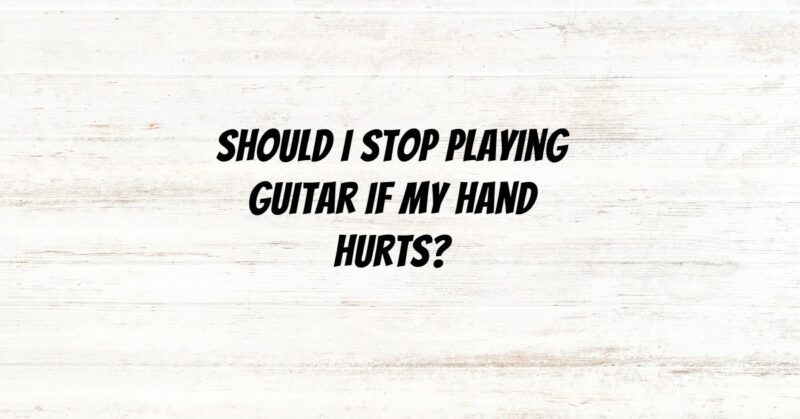Playing the guitar is an enjoyable and creative pursuit, but like any physical activity, it can occasionally lead to discomfort or pain, particularly in your hand. If you’re experiencing hand pain while playing the guitar, it’s essential to understand when it’s appropriate to take a break and when you should continue. In this article, we’ll discuss the factors that can cause hand pain, when it’s a cause for concern, and how to address and prevent it.
Common Causes of Hand Pain When Playing Guitar:
- Overuse: One of the most common reasons for hand pain among guitar players is overuse. Excessive playing, especially during long practice sessions, can strain the hand muscles and tendons.
- Improper Technique: Incorrect hand placement or poor playing technique can put unnecessary stress on your hand, leading to pain and discomfort.
- Tension and Stress: Excessive tension in your hand and forearm while playing can contribute to pain. Stressing about your performance can also cause physical tension.
- Inadequate Warm-Up: Skipping warm-up exercises before playing can make your hand more susceptible to strain and discomfort.
- Inadequate Rest: Failing to take breaks during extended practice sessions or repetitive playing can increase the risk of hand pain.
When Should You Stop Playing Guitar Due to Hand Pain?
While experiencing some discomfort is common and expected, there are situations when it’s advisable to stop playing and rest:
- Sharp or Intense Pain: If you’re experiencing sharp or intense pain, it’s a sign to stop playing immediately. Pushing through severe pain can lead to injury.
- Numbness or Tingling: If you feel numbness or tingling in your hand, it could be a sign of nerve compression or improper blood flow. Stop playing and assess the situation.
- Pain Persisting After Playing: If your hand pain continues after you’ve stopped playing, it’s essential to give your hand adequate rest and consult a medical professional if the pain persists.
- Loss of Strength or Dexterity: If you notice a sudden decrease in your hand’s strength or dexterity while playing, it’s a sign that you should stop and address the issue.
Addressing and Preventing Hand Pain:
- Proper Technique: Ensure that you’re using proper hand placement and technique when playing the guitar. Taking lessons from a qualified instructor can help correct any issues.
- Regular Stretching and Warm-Up: Incorporate finger and hand stretching exercises into your practice routine. Warm up before playing to reduce the risk of strain.
- Frequent Breaks: Take short breaks during extended practice sessions to give your hand muscles and tendons time to recover.
- Hand Strengthening Exercises: Implement hand and finger strengthening exercises to build the necessary finger and hand strength for playing the guitar.
- Ergonomics: Ensure that your guitar is properly set up to match your body and playing style. Adjust the guitar strap and the height of your chair if necessary.
- Manage Stress: Stress and tension can exacerbate hand pain. Incorporate relaxation techniques into your routine to alleviate stress and promote physical relaxation.
- Consult a Medical Professional: If your hand pain persists or worsens, don’t hesitate to consult a medical professional or a hand specialist. They can provide a diagnosis and recommend appropriate treatment.
Conclusion: Listen to Your Body
In conclusion, hand pain while playing the guitar is not uncommon, and it’s essential to pay attention to your body’s signals. While some discomfort is expected during the initial stages of learning or intense practice, it’s crucial to differentiate between manageable discomfort and signs of potential injury. Knowing when to take a break, practice proper technique, and incorporate preventive measures can help you enjoy a pain-free guitar playing experience while progressing in your musical journey.


